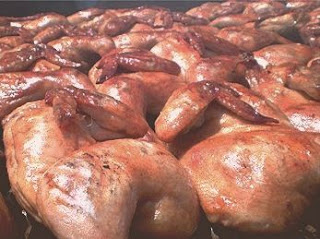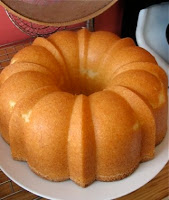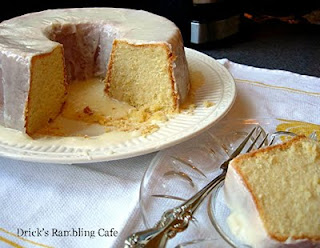Brissilling Chicken: the Art of Greenvillian Grilling
the soul of Greenvillian grilling
Folks, this perhaps is a tough one to write about as in some regard talking about Chicken Brissil is like revealing family secrets. And I'm not talking just about my family, but many from my home town as well. Now who am I to fling open the coop?
My desire has always been and continues to be, to pass along great recipes from my family to friends and folks like you, even complete strangers so that all may know the wonderful foods we enjoy in the south. Southern heritage recipes as I like to call them, are ones that you won't find elsewhere but here in the south, ones that are passed along with pride to the next generation. Doing so keeps the recipe alive and with each passing we are somehow savoring the taste of yesteryear, remaking it just as good today as it was for the last generation. In essence, there's history in every mouthful. I published my granddaddy's version of his mopping sauce for Brissilling Chicken and his sauce too in our family cookbook but have been hesitant in mentioning the other versions at all. But then I got a nudge of sorts from of all places, Dear Abby, the one about 'the secret pancake recipe' and after reading the many responses I found my answer many times over. Briefly, it is okay to pass along recipes before they are lost or destroyed and especially if they are already published or revealed. Okay, enough of that.
Brissilling, now exactly what is that? Go ahead, look it up, Google it, do what ever search you like and if you come across a meaning as in a cookery term, I want to know. I have only heard of if from my hometown area. I am not making this up folks, it is in print and I'm not talking about our family cookbook here, not on the Internet (until recently from this post) and to many, handed down from generation to the next from memory in some form or another of the printed version. I have my whole life talked to folks from Greenville, many who have moved away and most everyone knows some form of chicken brissil.
 |
| page from cookbook |
Here is what I do know. Glenn Stanley's recipe is for a mopping sauce used to baste the chicken during the cooking process, a term we know as brissilling. He like to also use this to moisten the chicken at the table along with slices of toasted bread to mop up the juices. Mrs. Perry Vann's #1 sauce recipe is very similar to Glenn's basting sauce and her #2 red sauce is a finishing table sauce. Chicken Brissill was almost always done on large scale affairs as it sometimes would take most of the day from start to finish. Granddaddy Cotton and his Mason buddies held fundraiser dinners often and town folks looked forward to these events as well as in the backyards of Greenvillians for social gatherings.
Once a week I spent the night in town with my grandparents as they and the Vann's played a round of Bolivia, a three deck card game that is so much more complex than canasta. It was boy scout night for me and game night for them, along with Red Skelton on TV. Over time, I picked up on how to play the game and also a little better understanding of the temperament needed and a few strategies as well. Perhaps knowing the Vann's so well is the reason we had a hankering for a red sauce with our chicken brissil. Read on...
3 recipes for Brissilling Sauce
Mopping Sauces
This is the 'secret sauce' that is used to cook and baste the chicken. Nothing fancy but to use it properly, ya gotta know how to Brissil (see below methods). Recipes are given as written. Italicized notations are my observations and how I was taught.
Mr. Glenn Stanley's recipe
1 1/4 pounds butter or oleo (early term for margarine)
1 quart good cider vinegar
1 lemon
salt
red pepper
Melt one pound of butter in the vinegar, add 2 tablespoons salt, 1/2 teaspoon red pepper. Drop in lemon cut in half. This is used to baste the chicken during the brissilling method.
When the chickens are ready to eat, add the other quarter-pound of butter to the remaining sauce to use on the toast which is served with the chicken brissil. Be sure to bring sauce to a good boil before serving.
A note from Glenn: While a clove of garlic may be added if desired, the addition of ketchup or other ingredients makes it chicken barbecue, not chicken brissil. There seems to have been a rift about this. I understand the true method of brissilling chicken is in using the vinegar sauce as a mop solution and also as a serving sauce, but my family always served Chicken Brissil with a red sauce on the side.
Mrs. Perry Vann's Sauce No. 1
1 pound butter
1 quart vinegar
1 tablespoon salt
Melt butter, add vinegar and salt. Heat
Daddy Cotton's Mopping Sauce for Brissilling Chicken
1 pound butter
1 quart vinegar
1 tablespoon salt
1/4 teaspoon red pepper flakes
4 lemons cut in half
In a large pot, big enough for dipping chicken halves, melt butter and add vinegar salt and red pepper. Drop in lemon halves, about a quart of water and heat to a low boil.
Red Sauces for Brissilled Chicken
Mrs. Perry Vann's Sauce No. 2
1 pound butter
1/2 cup vinegar
1 large bottle catsup
1 large bottle chili sauce
4 lemons
2 level tablespoons sugar
2 level tablespoons Worcestershire
1 level tablespoon salt
Melt all together, blend and stir over low heat for 10 minutes.
Sauce No. 1 is used until chickens are about half done or 30 minutes. Then use Sauce No. 2 for the remaining cooking time, about 30 minutes. Save any Sauce No. 2 that is left and serve on toasted buns. This portion will barbecue about 10 chicken halves. (see, she makes no bones about this being BBQ)
| Daddy Cotton's BBQ Sauce |
Daddy Cotton's BBQ Sauce for Chicken
1 stick of butter (4 oz)
2 tablespoons cider vinegar
1 -14 oz bottle ketchup
1 -12 oz bottle chili sauce
1 large lemon cut in quarters
1 tablespoon Worcestershire
3 tablespoons water
1 teaspoon sugar
black pepper to taste
Blend over low heat stirring often for 10 minutes. Remove lemons and squeeze juice into the sauce, discard lemon (rinds will turn bitter). Serve in a gravy boat.
Brissilling Chicken Methods
Now this is where the recipes end and the real meaning of this post begins. I am not going to even begin to fathom where the term brissil or brissilling comes from...I only know how I was taught and I welcome all comments and suggestions from Greenvillians in honing this honored term, it's cooking method and meaning.
Fire Pit
I was taught to brissil chicken over moderate hot coals using a brick fire bit in my granddaddy's back yard. His was large, holding about 40 chicken halves at a time. The coals had to be just right, a good 3 inches deep using glowing oak briskets with a few pieces of moist pecan chunks mixed in for flavor. The metal cooking grate, positioned a good 12 to 15 inches above the ashy-white hot embers, was deep enough to produce a good draw and pulled the smoke up into the chimney. The chicken went on skin-side down first for about 3 minutes and then flipped over. Every 5 minutes or so, the mopping sauce was applied using a long-handled mop, actually a broom handle with a wad of muslin tied to the end. The butter from the sauce and fats from the chicken would almost always cause flareups followed with a good sprinkling of water from a coke bottle. That is where I helped, filling up the bottles and replacing the metal sprinkler stoppers that he borrowed from Annie Bell who used them in ironing. Anyway, I just can't help but think that the constant basting of the lemon/vinegar sauce, the flare-ups from the oils and the steam caused from the dousing of water somehow plays a role in the term 'brissilling'. We all know, slow moist heat is the best way to grill chicken.
Charcoal Barrel Grilling
 |
| moist, brissilled chicken |
NOT DONE YET
My Way
I pretty much follow the same theory, but cook on a gas grill most of the time and in doing so, am not able to cook so high above the heat source as how I was taught over coals. Therefore, I have modified the mopping sauce recipe and cooking method a bit. I also use the sauce (watered down) as a marinade to soften up the chicken, making the meat moist with the brine solution and I added a little sweetness to it too.
My Brissilling Sauce
for 2 whole chickens

cracked black peppercorns
4 lemons, halved
1/4 cup kosher salt
1/2 tablespoon red pepper flakes
1 garlic clove, sliced
2 tablespoons brown sugar
2 tablespoons cider vinegar plus 1 cup, divided
 |
| marinating chicken halves |
Prepare grill. Remove chicken to platter and place sauce in stockpot. Bring to a boil and add remaining cup of vinegar. Reduce heat and simmer on low 5 minutes to get the mopping sauce ready for grilling.
My Method
Heat grill to medium, 350 degrees F. Place chicken skin-side down. Cook 3 to 4 minutes and turn over cooking 5 minutes. If flare ups occur, dip chicken in sauce. Keep lid closed as much as possible. Every 10 to 15 minutes, dip chicken in sauce and rearrange on grill moving to cook evenly on the grill. As the chicken browns, move to cooler part of grill. The thighs will do better on the hotter areas while the breast part stays moister on the cooler parts, that is if your grill is old like mine and is a bit cranky....
My Cheatin' Sauce
1 -12 oz bottle Chili Sauce
4 oz Kraft's Hickory Barbecue Sauce
Lemon juice, Worcestershire to taste
Mix, heat and serve.
that's all ... and as my Granddaddy Cotton would say, "See ya in the funny papers."



article found in past Greenville Advocate (Nov 9, 1950).... THE CHICKEN BRISSIL C There was a time, a few years ago. when Greenville's chief claim to fame was the chicken brissil which was served to all visitors, as practically everyone had a barbecue pit m the back yard, and the public barbecue pits in the R. A. Beeland Park were in constant use. The chicken brissil has degenerated in Greenville. Not because visitors are now entertained by showing them the camellias, but for some reason the old original chicken "brissil" recipe has been displaced by a variety of barbecue recipes. The original recipe, brought to Green ville almost forty years ago by the family of the late Rev. W. O. Waggoner, contained three basic ingredients vinegar, butter and salt. Now the basic ingredient seems to be ketchup. Mr. Waggoner, by the way, was a Methodist minister. He transferred to the Alabama Conference from California, served the Greenville church for three years, and transferred back to California, served the Greenville church for three years, and transferred back to California. He was one of the most elo quent pulpit orators ever heard in this city. His power of alliteration in the pulpit is remembered by those of the older citizens, while his recipe for grill ing chickens on a barbecue pit is about to be forgotten, as a new barbecue sauce, reeking with tomato ketchup, has taken the place of the flavorful original. The "brissil" recipe contained the three basic ingredients in the proportion of one pound of butter to one quart of vinegar, with enough salt to make the sauce very salty. This was dabbed on the chickens as they cooked slowly over a bed of hot charcoal. (The original "pit" was dug in the ground, with a piece of wire netting pinned down over it.) When the chickens were cooked, more vinegar and butter were added to the sauce which was then mopped on the toast, prepared as the chickens were taken up. There was no salt added to this, as the heavy salted sauce was needed to give the savory taste to the chickens, but not to the toast. Variations to the original sauce started to appear some years ago, and we cannot argue that some of them did not tend to improve it. A garlic button dropped in the pot of sauce was welcomed by those who like their food to contain that rather priceless taste-tick ling element. A lemon, slit in half and dropped m, was also a welcome addi tion; and a shot of red pepper really pepped up the sauce. But the collaborators just couldn't stop at that. They went on to add everything but a pinch of snuff. Hot sauces were dumped into the barbecue sauce, and the chicken brissil experts took up the watchword: "Don't spare the ketchup." There are those who like that ketch up taste. We'll confess we can take-it, or leave it alone; but the chicken brissil's real flavor is entirely lost if too much ketchup is added. The artiste with the long fork at the barbecue pit never adds a single drop of ketchup until the chick ens are removed from the fire. Then he adds the red stuff to the remaining sauce, and the persons eating the chick en can have it, or leave it. Ketchup contains sugar and when added to the sauce it causes the chicken to brown on the outside before it is completely cooked. Many times the barbecued chicken is served half raw. Ugh! A chicken cooked over a charcoal fire is not done until a wing can be pulled off with ease. If the wing has to be twisted off with an effort, youH find that the meat has not been completely cooked. There 11 be red, raw spots deep down in the breast, where the wings join the body of the fowl Cook the chickens until they are dorie,: and save the ketchup until the last if you just must have barbecued chicken -not bris- Alabama's ass& silled chicken. C.
ReplyDelete